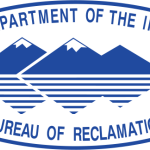- Branche: Government
- Number of terms: 15655
- Number of blossaries: 0
- Company Profile:
A U.S. Department of the Interior agency that oversees water resource management incuding the oversight and operation of numerous diversion, delivery, and storage projects the agency has built throughout the western United States for irrigation, water supply, and attendant hydroelectric power ...
A site or resource that is eligible for inclusion in the National Register of Historic Places because of its association with cultural practices or beliefs of a living community.
Industry:Engineering
A measurement for assessing damage after a dam fails. The difference between the projected loss of life had the dam not been built and the projected loss of life with the dam in place.
Industry:Engineering
Understanding as to what degree flooding might affect the downstream population. The judgement on flood severity understanding is based on type of loading and is described as either vague or precise.
Industry:Engineering
A dam, the stability of which depends in part on the tension in steel wires, cables, or rods that pass through the dam and are anchored into the foundation rock. See Stewart Mountain Dam.
Industry:Engineering
A contributing factor to water pollution that cannot be traced to a specific spot. Man-made or man-induced alteration of the chemical, physical, biological, or radiological integrity of water, originating from any source other than a point source. Pollution which comes from diffuse sources such as urban and agricultural runoff. Major nonpoint sources of pollution include excess farm and lawn nutrients that move through the soil into the ground water or enter local water directly through runoff during heavy rains; uncontrolled storm water runoff from construction sites; forestry operations; animal wastes; and even pollutants released directly into the atmosphere. Pollution sources which are diffuse and do not have a single point of origin or are not introduced into a receiving stream from a specific outlet. The pollutants are generally carried off the land by stormwater runoff. The commonly used categories for nonpoint sources are: agriculture, forestry, urban, mining, construction, dams and channels, land disposal, and saltwater intrusion.
Industry:Engineering
Water that flows or seeps downward and saturates soil or rock, supplying springs and wells. The upper level of the saturated zone is called the water table. Water stored underground in rock crevices and in the pores of geologic materials that make up the earth's crust. That part of the subsurface water which is in the zone of saturation; phreatic water. Water found underground in porous rock strata and soils, as in a spring. Water under ground, such as in wells, springs and aquifers. Generally, all subsurface water as distinct from surface water; specifically, that part of the subsurface water in the saturated zone where the water is under pressure greater than atmospheric.
Industry:Engineering
The Reclamation Reform Act of 1982 limits the amount of owned land that is eligible to receive project (Reclamation) irrigation water and addresses the rate paid for such water delivered to owned and leased land. See acreage limitation. Requires districts that have certain repayment or water service contracts with the United States to develop water conservation plans which include definite goals, appropriate water conservation measures, and a time schedule for meeting the water conservation objectives. See water conservation. For the full text of the law, see Reclamation Reform Act of 1982.
Industry:Engineering
A state or local plan, usually developed in accord with guidance contained in the Guide for the Development of State and Local Emergency Operations Plans, Civil Preparedness Guide 1-8, September 1990, and other similar guides. The emergency operations plan clearly and concisely describes a jurisdiction's emergency organization, its means of coordination with other jurisdictions, and its approach to protecting people and property from disasters and emergencies caused by any of the hazards to which the community is particularly vulnerable. It assigns functional responsibilities to the elements of the emergency organization, and details tasks to be carried out at times and places projected as accurately as permitted by the nature of each situation addressed.
Emergency operations plans are multi-hazard, functional plans that treat emergency management activities generically. They have a basic section that provides generally applicable information without reference to any particular hazard. They also address the unique aspects of individual disasters in hazard-specific appendixes.
Industry:Engineering
The difference in elevation between the maximum water surface in the reservoir and the dam crest. The vertical distance between a stated water level and the top of a dam, without camber. Thus "net freeboard," "dry freeboard," or "flood freeboard" is the vertical distance between the maximum water surface and the top of the dam. "Gross freeboard" or "total freeboard" is the vertical distance between the normal water surface and the top of the dam. That part of the "gross freeboard" attributable to the depth of flood surcharge is sometimes referred to as the "wet freeboard," but this term is not recommended as it is preferable that freeboard be stated with reference to the top of dam.
Industry:Engineering
A scale of numerical values, proposed by C. F. Richter, to describe the magnitude of an earthquake, ranging from 1 to 9, by measurements made in well-defined conditions and with a given type of seismograph. The zero of the scale is fixed arbitrarily to fit the smallest recorded earthquake. The largest recorded earthquake magnitudes are near 8.7. This is the result of observations and not an arbitrary upper limit like that of the intensity scale. For more information about the Richter Scale visit the U.S. Geological Survey National Earthquake Information Center.
Industry:Engineering
